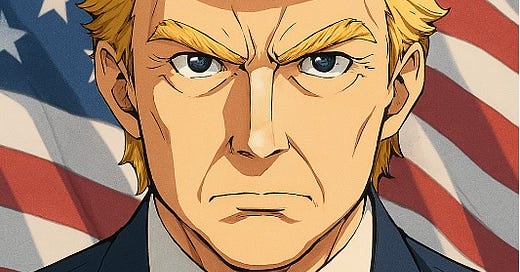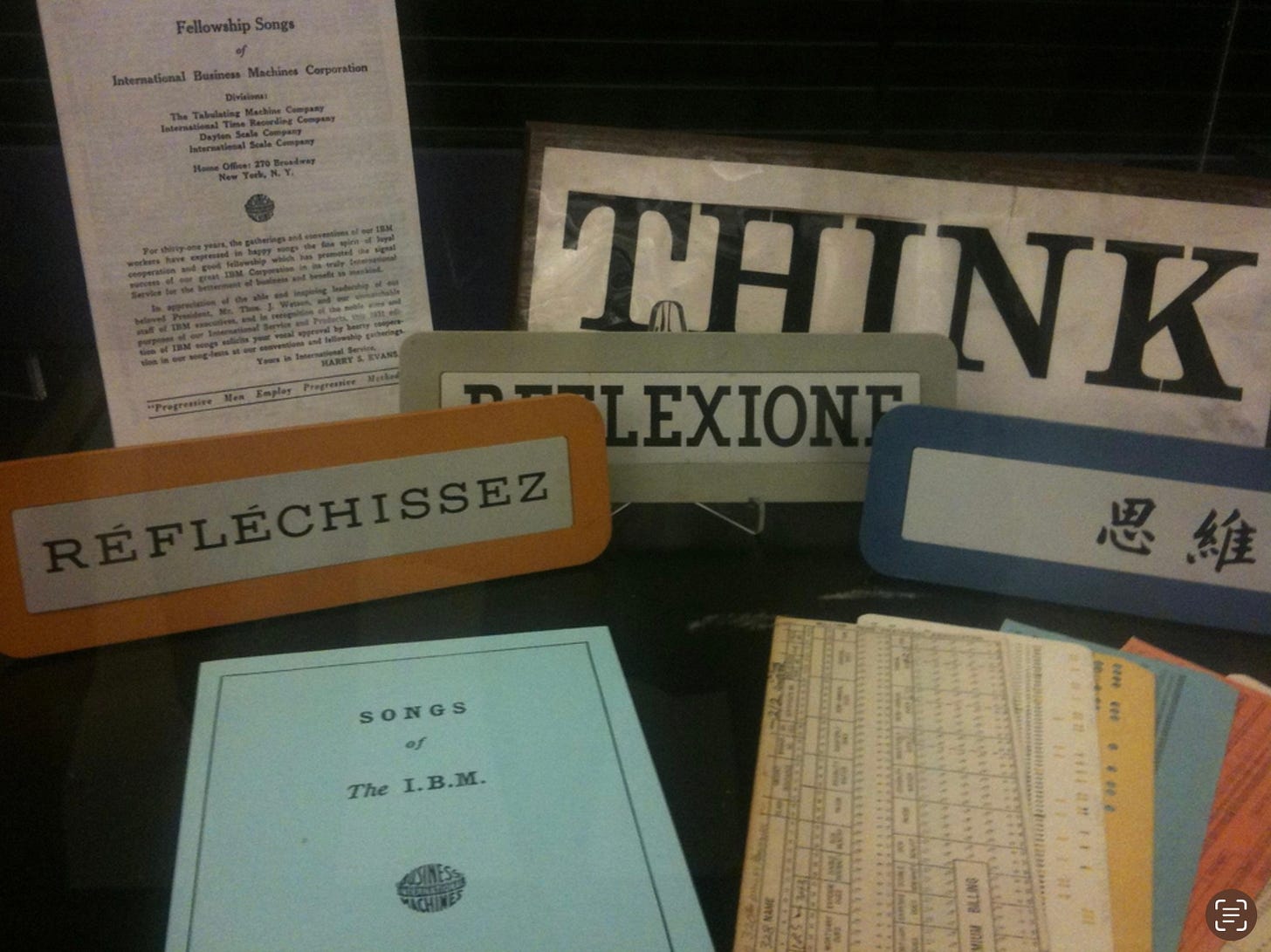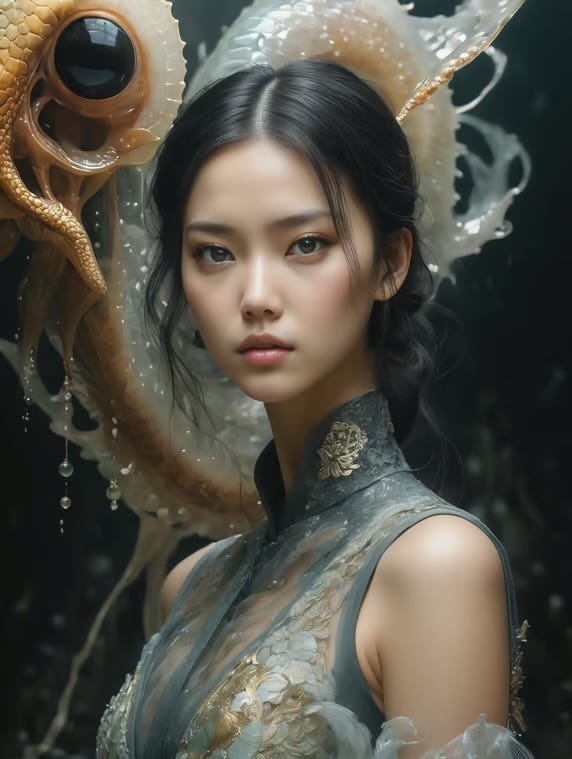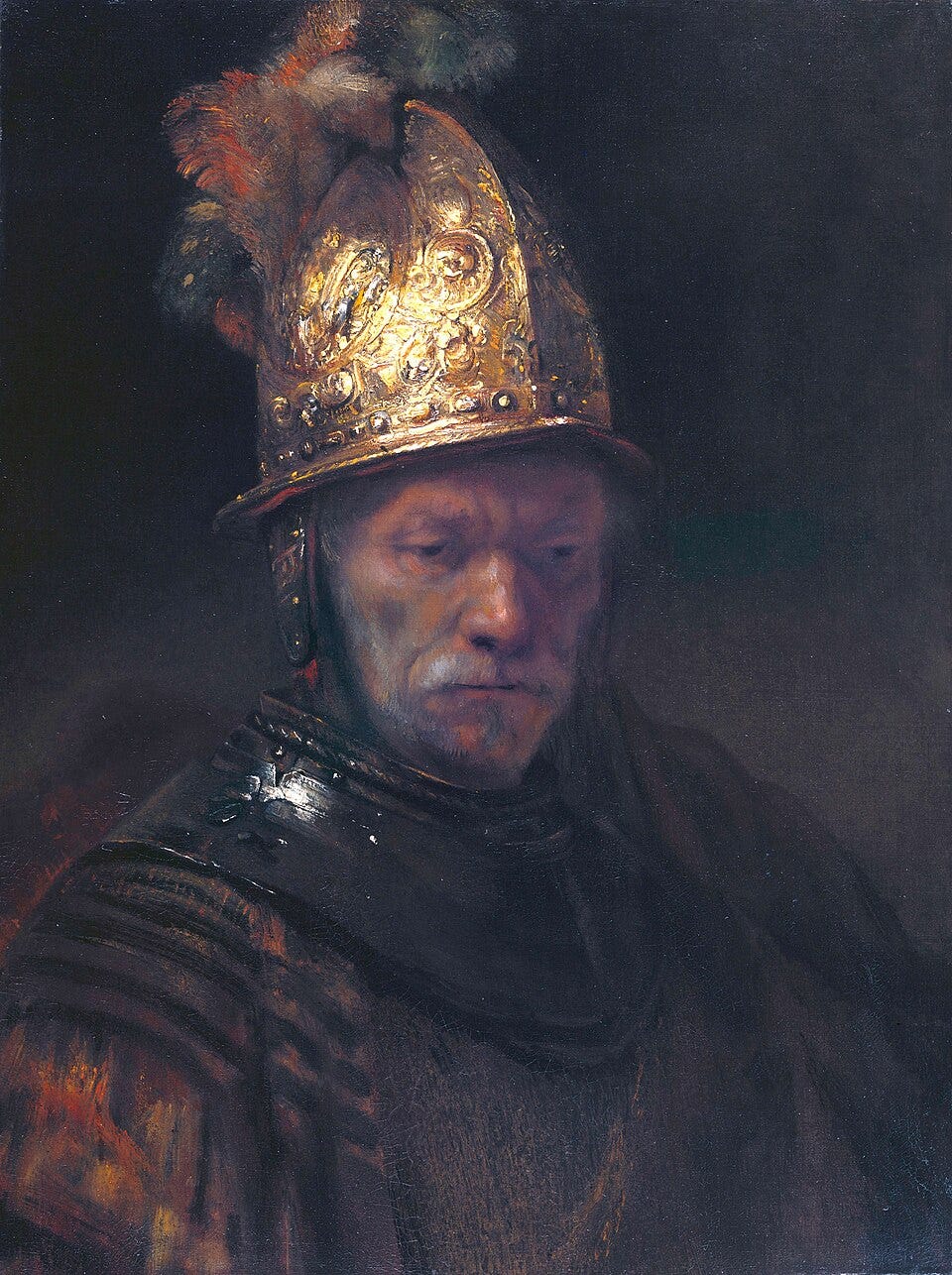I teach Illustrators and a whole heck of a lot of them love anime and they were less than impressed by the ChatGPT Ghibli generator. The sad part is not the effect on the original work, it’s the ‘just good enough’ of the copy. This is not going to go away, this genie is not returning to its bottle. There is only one way to beat this and it won’t be in a court of law.
In 1911, at an uninspiring sales meeting for NCR, (National Cash Register) Thomas J. Watson wanted to stir up his moribund salesmen—
‘The trouble with every one of us is that we don't think enough. We don't get paid for working with our feet — we get paid for working with our heads".
Watson then wrote THINK on the easel. In 1914, he moved to a new company that would eventually be called IBM. Watsons Think became the company motto in 1935.
When Steve Jobs returned to Apple in 1997, their ad agency TBWA\Chiat\Day launched a new campaign that hijacked IBM’s motto to situate Apple as an innovator—uncommon and unique. Visual artists need to go through the same rethinking exercise today.
A.I. generative art unlike the slop that is pretending to be Google search these days, is visually arresting and deceptive. Recent controversies in realism art contests have erupted because some submitted images are nearly indistinguishable from the real thing. The strangest part of a recent controversy was a jury member for the ARC Salon painting contest, John Michael Angel (Angel Academy used to have a business selling representational drawing instruction in Toronto, now located in Florence Italy) replying on a YouTube thread…
If the work is beautiful, who cares who painted it, AI or not? If “The Man in a Golden Helmet"(sic) turns out not to be by Rembrandt, I don't care: it remains one of the most beautiful paintings in the world.
His statement makes no sense, this isn’t about celebrity artists and the inflation of their work because of their name, this is about 6 billion images made by human hands stripped of their semantic skin and then sluiced out of a pixel making machine to mimic human expression. I agree the Man with a Golden Helmet is still a great painting, it was reattributed to the circle of Rembrandt in 1985, it’s not a fake with a forged Rembrandt signature, it’s just not by his hand. When I saw it in 1984, it had a line up infront of it, now it gets a sometimes curious glance—-that speaks volumes about why A.I. generative art is so toxic, most people have little visual knowledge to judge the quality of art—-the name on the label is the proof. The problem may be the dial for many people has been turned from ‘just good enough’ to ‘just as good’ in specific areas of visual images.
On his Substack, The Ruffian, writer Ian Leslie offers Nine Principles for Success In The Age of AI—-I only read 3, as the rest are behind a paywall, but the titles alone of the first 3 are apt for this post—-1.Don’t Be Human Slop, 2. Your Work is Your Personality, 3. Be Difficult to Model. His advice isn’t for visual artists but these 3 principles do apply, especially when the common denominator of the visual images output from generative art A.I. share a critical aspect——they are conventional.
A.I.‘s kryptonite is the unconventional, we need to make degenerative art. Art that refuses to be modelled, to be captured and easily consumed. How we teach art has to centre independent thinking and approaches. All the how to’s and techniques, conventions and step by steps of drawing exercises need to lead in a direction away from the cliff of A.I., away from the sweet music wafting up from the chasm, inexorable and deadly.
We need to be surprise artists, fuelled by an imagination super-charged by curiosity. Develop our peripheral vision to see connections between disparate ideas, to synthesize the uncommon and to take unforeseen paths open to invention and new challenges. We may never be able put a stake through the heart of A.I., but we can stop the visual vampirism, it will take a new way of thinking and a practice to support that thinking ….more next week.









